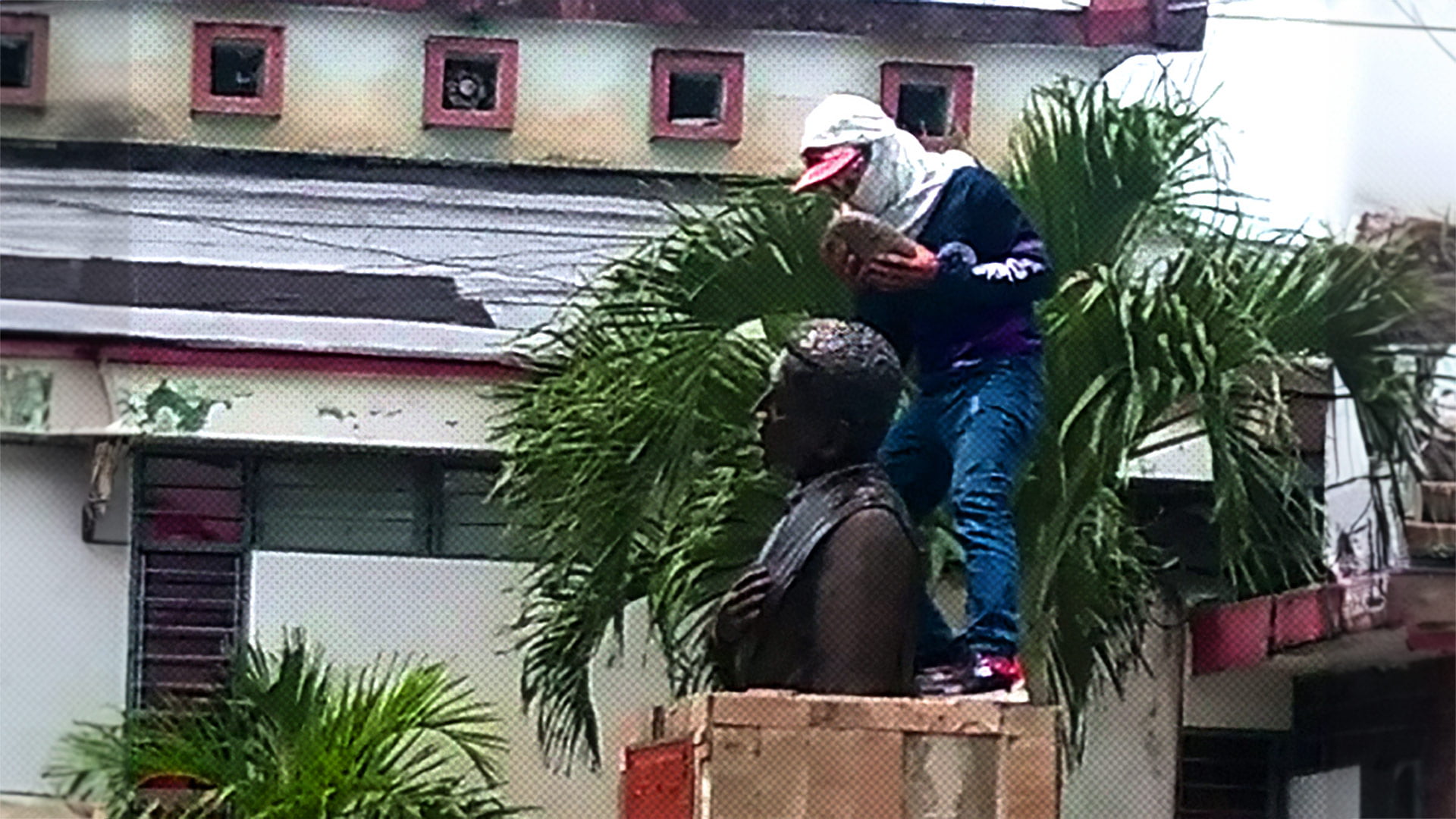

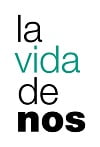
Less than forty-eight hours after the National Electoral Council announced that Nicolás Maduro had won the July 28 elections, at least five statues of Hugo Chávez were toppled at various places in Venezuela. The narrator Héctor Torres reflects on those events and comes to the conclusion that, more than acts of protest, they signify the ultimate spiritual breaking of ties with a model that left an imprint on much of the country during the last twenty-five years.
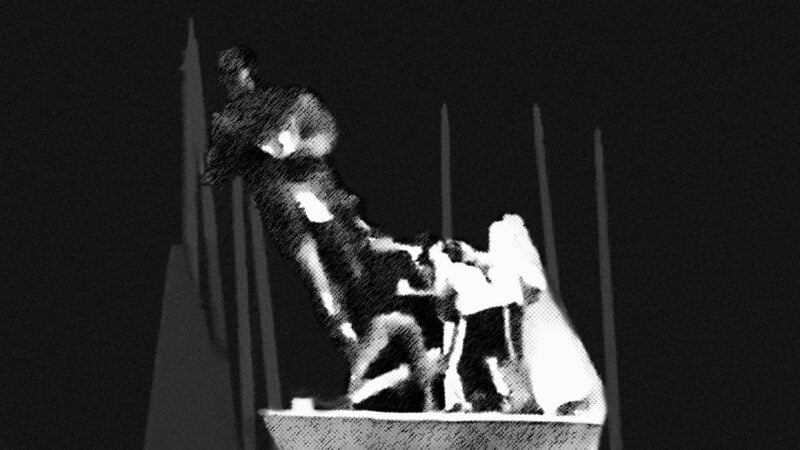 PHOTOS: SOCIAL MEDIA USERS
PHOTOS: SOCIAL MEDIA USERSStatues are erected when the wrongs, the harm, the injustice of the past become a distant memory in people’s minds with the generous passage of time. Characters in statues are stripped of the traits that make them human and come to represent ideas devoid of all passion, cold as the marble or bronze of which they are made.
Statues are designed to withstand the test of time; that is why they are carved in solid, noble, durable materials capable of outlasting generations of this fleeting matter that is the body of ours. They depict irrefutable or, at least, unanimously accepted truths.
Now, since the ideas about what a country wants for itself are not set in stone, what makes statues durable is not the material they are made of, but the relevance of the ideas they represent. And if there is one thing that helps a country determine which idea it wants for itself, it is elections. Elections are the ultimate public forum.
So, it makes sense for this story to start precisely on July 28, 2024, the day when one of the most complex elections that Venezuelans would have to face in the twenty-five years of Chavismo in power were held.
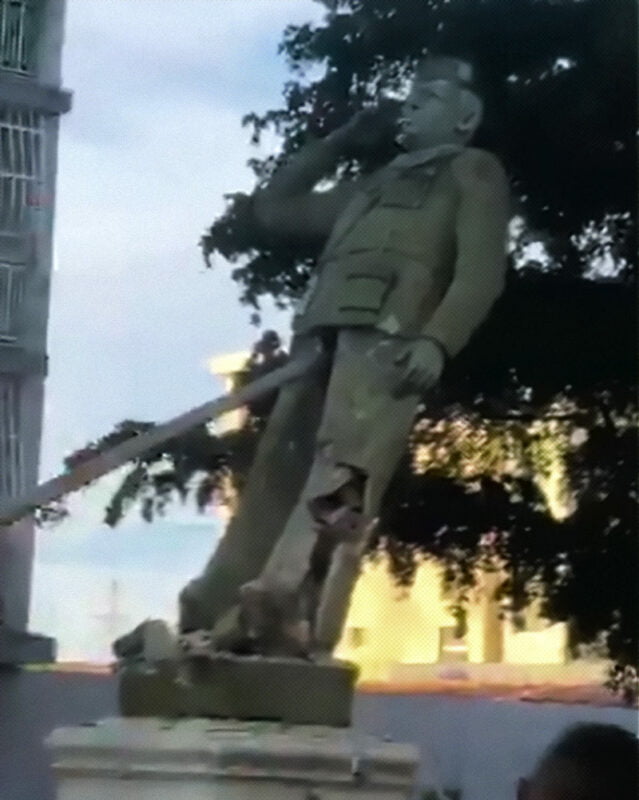
From the moment that the National Electoral Council (CNE), at the stroke of midnight, issued a first bulletin declaring Nicolás Maduro the winner of the Venezuela’s presidential election, protests ignited in many cities across the country. According to the CNE, Maduro had won with almost 52 percent of the vote and the trend was “irreversible”, despite its assertion that it had processed only 80 percent of the tally sheets, which meant that more than 2 million votes were still to be counted —three times in excess of the difference they were claiming over Edmundo González Urrutia.
The Venezuelan Observatory of Social Conflict documented 564 protests the length and breadth of Venezuela between July 29 and 30 alone. In the heat of the protests, demonstrators took down all the Nicolás Maduro campaign material they found in their path: banners, large-format prints, billboards…
And tensions would only escalate from that point on.
The focus of the rage against the iconography of an unfair and disproportionate campaign shifted from the candidate’s billboards to the statues of Hugo Chávez. From that very night and until the following day, at least five statues in various villages around the country, all located in cities that used to be electoral strongholds of Chavismo, were pulled down, or burned.
By July 30, less than forty-eight hours after the CNE announcement, the statues in place in Calabozo (state of Guárico), Las Tejerías (state of Aragua), Mariara (state of Carabobo), La Guaira (state of La Guaira), and Coro (state of Falcón) were gone, the iconic image of a protester smashing the 9.8-feet statue in Coro with a sledgehammer becoming one for posterity. A few miles from there, the head of the statue in Mariara was dragged on a motorcycle through the streets of the angry town.
There is an earlier record of the toppling of statues in Venezuela during Chavismo that originated, precisely, from within its own ranks. On October 12, 2004, two years after Hugo Chávez signed a decree by which Columbus Day would be renamed Day of Indigenous Resistance, a group of supporters of Chavismo, including government officials, knocked down the statue of Christopher Columbus in Plaza Venezuela, Caracas, and took it, as if it were an offering, to a downtown theater where an event honoring the indigenous resistance was taking place.
“What we did was to bring Columbus to a symbolic trial. Once sentence was passed, the statue was knocked down by young protestors who climbed to the top of it and put ropes around its neck”, one of the witnesses declared for a newspaper.
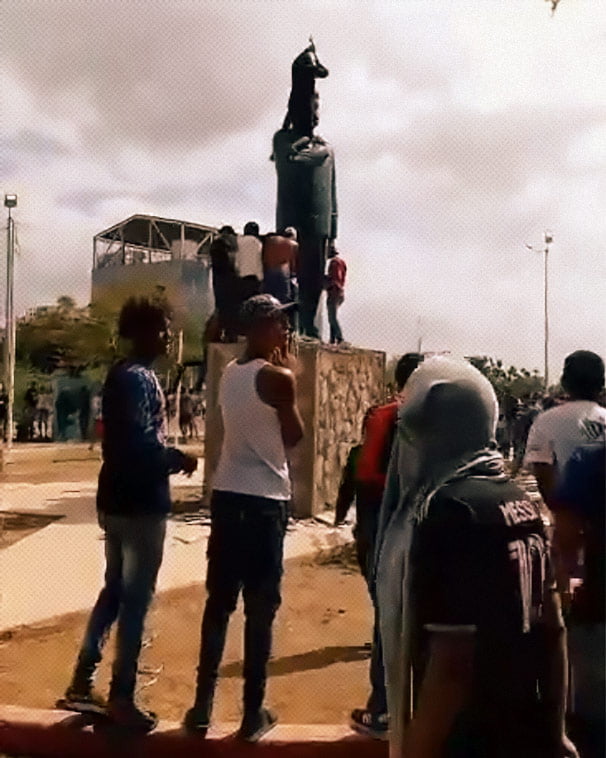
It is not the first time that statues of Chávez have been wrecked. On April 24, 2017, one located in the village of Mariara, state of Carabobo, was set on fire during the protests that erupted that year. And just eleven days later, in a small town in the state of Zulia called Villa del Rosario, a group of people who had been the victims of repression toppled a statue of Chávez in a public square. Fourteen people were arrested, including one who was threatened with prosecution on a charge as inexplicable as “assault on a sentry”, although he was later released. Within twenty-four hours, to compensate for the grievance, Chavismo had it replaced with an average bust that ended up looking disproportionate for a pedestal that had been built to carry a full-bodied figure. To make sure that it was not pulled down, a tent was set up where twenty National Guard officers watched over it around the clock to prevent people from “desecrating the Commander” again.
Two days after that, on May 7, another statue, this one in the Tienditas sector of Ureña, state of Táchira, was forcibly detached from its base and taken to an unknown place. On July of that same year, another statue was burned.
In March of the following year, during a series of protests over power outages in Sabaneta, state of Barinas, which is where Hugo Chávez was born and the place once regarded as the sacred bastion of Chavismo, the locals burned and toppled a statue of him. In July of that year, in the state of Zulia, and again during protests over blackouts, another statue was toppled that had been placed the previous year. There are also other records of wrecked and vandalized Chávez statues in San Félix, state of Bolívar, and in a village in the state of Yaracuy.
It has been a long agony for an imaginary that has been dying out slowly but inexorably. This is apparent not only in public squares, but in the very spirit of thousands of its followers who, disappointed and tired of waiting for something from a revolution that promised them paradise, are now amongst the many in the country who decided to steer clear of what they perceived to be a religion based on resentment.
The toppling of statues is the reaction to an imposed monologue. Why do people tear them down? If putting up statues is a symbolic gesture, tearing them down is one too. And in the realm of symbolism, the followers of those in power marvel at the fact that the statues they commission are made to last, but the toppling of said statues shatters their faith in that perdurability to pieces.
That is why they are symbols: they help put into words hard-to-express ideas that are synthesized in the figure of the person who embodied them.
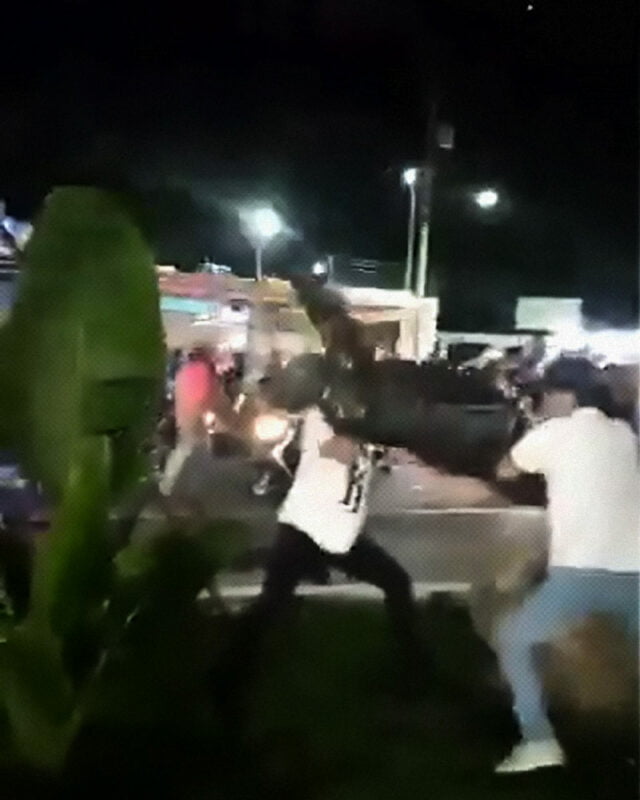
This symbolic operation has been around for quite long time now. The figure of Chávez was used by the ruling political class to perform as the exegetes of a religion that they tried to instill in people. No wonder, beginning in 2013, which is the year when Chávez’s death was announced, the government had his eyes painted in the walls of public buildings and places all around Venezuela. It was as if the entire country was being told that he was watching over it like a “heavenly father”.
But that attempt at turning Chávez into a religion in the manner of Evita Perón in Argentina was unsuccessful. Soon enough, what the people in the opposition had taken to mean a threat of intimidation and surveillance, began to resonate with others. And when the Chavista people felt that the government’s actions marked a departure from what Chávez stood for, they started to see in those eyes a look of disapproval of what it was doing with the “revolution”.
There are many examples in contemporary history of the toppling of statues as a sign of protest. Some have been removed by governments that felt ashamed to have set them up in the first place. Others have been toppled by people acting on a moment’s impulse. There are three iconic cases in this century alone. The first one is the statue of Saddam Hussein, which was brought down in Bagdad in 2003, just as the tyrant’s government was on the brink of collapse. The second one is the famous golden-fist monument symbolizing Muammar Gaddafi’s regime, which was toppled as his rule was coming to an end. Just as clear in its symbolic message was the toppling in Ukraine in 2013 of the statue of Lenin by protesters in response to the decision taken by the government of Víctor Yanukóvich to reject a trade agreement with the European Union and instead strengthen ties with Russia.
The toppling of statues means there has been an abrupt break with an official history with which people no longer feel identified. But there are other meanings and symbolisms involved. Thus, it is only fitting that one should place the focus on certain details: the statues that were toppled in Venezuela depicted Chávez the military man. This is an important element to take into account in order to understand the root of people’s rejection.
And, since ideas are energy in words, there is a not so readily noticeable element in those actions as well. Among the many statues that were knocked down during those days’ protests, special mention should be made of that of Chief Coromoto in Guanare, state of Portuguesa. There is a video showing the statue being dragged on a motorcycle through the streets and someone heard saying, “Out with the pact. Long live Christ!”
All that is symbolic has a magical character. Symbolism feeds beliefs, which is why there are people who call statues like the one above, or the pyramid at the entrance of the Valle-Coche Highway, at the exit of Caracas, dominations, which are objects charged with energy with the capacity to influence the will of the people.
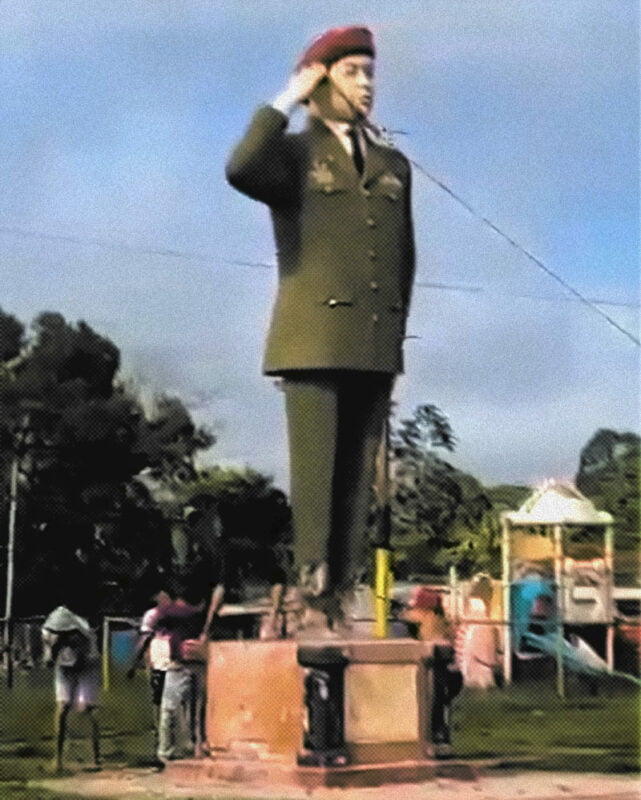
All these elements are useful to reflect on the disproportionate protection given to one of the statues of Chávez still standing in the state of Nueva Esparta. There is a video showing the statue being guarded by groups of military security officers to prevent it from being pulled down. People who have passed right by the area in recent days attest to the presence of a excessive number of police and National Guard officers guarding the image, as if it were more than a piece of inert material.
In that realm of invisible energies, it is interesting to note that on the same night the video of the guarding of the statue in Nueva Esparta was being streamed on line, the residents of El Vigía, state of Mérida, organized themselves in a prayer vigil for Venezuela. During the vigil, people stood around an array of candles that, seen from above, read “Venezuela” and depicted the image of a rosary. And, also on that same night, in the town of Casanay, state of Sucre, a prayer vigil for Venezuela was taking place.
Rituals are intended to put the mind at ease so that it can focus on generating a shared energy. One cannot help but remember that María Corina Machado, who carried a rosary with her on her rallies across the country, has often said that the fight facing the country is also spiritual.
What is different about these new attacks on the Chavista imaginary? That, although they are still an expression of repudiation, they are slightly more complex in content: one does not destroy that which represents an idea only to be left bereft thereof. The imaginary that has now permeated cities and towns in Venezuela was put into words by María Corina Machado, whom people commonly call, “María”, plain and simple, during her campaign rallies, which is yet another symbolic element that cannot be overlooked. Whenever she was addressing a crowd in places where people needed help because they could not fend for themselves, she warned them that her job was to offer them work, not handouts. And unlike Chávez, who wanted to indoctrinate people with the idea that being rich is bad, she said in a rally: “What is this effing nonsense that being rich is bad? Hell, no! Being rich is good!” with cheers from the crowd. “Rich here, here, and especially here” —pointing at her head, her heart, and the wallet pocket of her pants. “Rich to bring home the bacon and to take care of our own.”
What is peculiar about the progressive disappearance of the Chavista symbolism represented in the statues of Chávez is that it is being emptied of content. For many households, especially those in low-income areas, Chávez had replaced the figure of the father, the man of the house. He was bossy, high-handed, violent, but the man of the house nonetheless. And just as Chávez made sense of the unspoken needs of the people and used them to his advantage to come to power in an election, so has María Corina Machado more recently. People learned the painful lesson of what it means to live under a government that forces them to depend on it for everything, and what they want now is adequate conditions to provide for themselves.
So, it is not just anger. It is something else. It is the ultimate spiritual breaking of ties with a model that left an imprint on much of the country during the last twenty-five years.
It is the extinction of an idea. And ideas are what statues symbolize.
This story was translated by Yazmine Livinalli.
396 readings
Narrador. Ciudadano neo-punk. Escribo porque no pude ser un pop-star. Sumergido en el cine, la música y todas las formas de contar historias. Autor de Caracas muerde, entre otros títulos. Coeditor de La Vida de Nos.